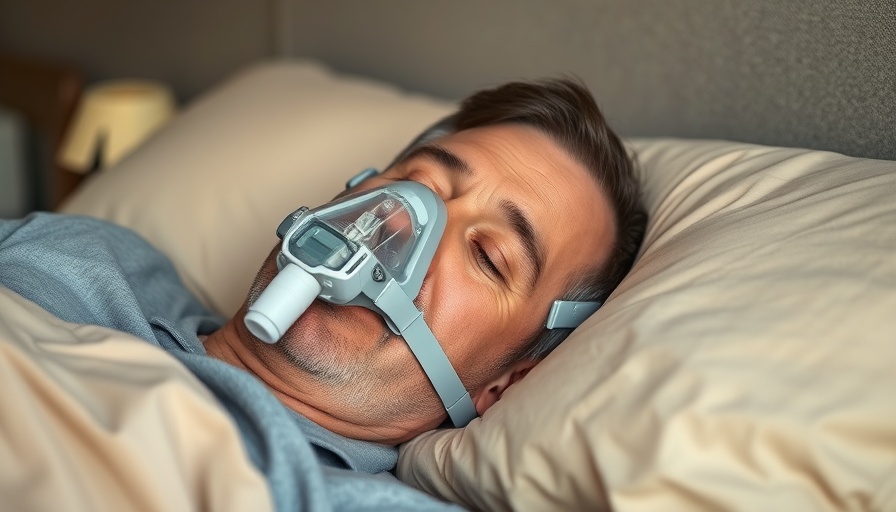
Understanding the Impact of CPAP on Mortality in Diabetes Patients
A recent observational study has unveiled a significant relationship between continuous positive airway pressure (CPAP) usage and reduced mortality rates among patients suffering from type 2 diabetes (T2D) coupled with obstructive sleep apnea (OSA). This newly highlighted link—where CPAP users experienced a 26% lower mortality risk than those who didn’t use CPAP—could represent a transformative approach for enhancing survival rates in this vulnerable population.
Behind the Numbers: What the Study Reveals
Analyzing the medical data of over 12,000 patients with T2D and OSA who were prescribed CPAP against a staggering 737,911 patients without CPAP, researchers uncovered critical insights. The study, led by Dr. Jonas Agholme from Linköping University, Sweden, highlighted that CPAP users averaged a younger age of 58 with a higher body mass index (BMI) of 34.7, compared to a mean age of 65 and a BMI of 30.6 among the non-CPAP group. Over a 14-year follow-up period, the results were striking: only 764 deaths occurred in the CPAP group (6%), compared to 212,336 deaths (29%) in the non-CPAP group, underscoring the life-saving potential of CPAP therapy.
Why Is This Important for Patients with Type 2 Diabetes?
Obstructive sleep apnea is frequently undiagnosed in T2D patients, exacerbating cardiovascular risks and inhibiting effective diabetes management. Dr. Agholme emphasized the necessity of early OSA diagnosis, suggesting that CPAP therapy could significantly enhance patient outcomes and overall survival. Considering that cardiovascular problems are among the leading causes of death in diabetic patients, integrating CPAP treatment into standard care protocols could provide a pragmatic and necessary intervention.
Moving Forward: Practical Insights for Care Providers and Patients
The implications of these findings are profound. For healthcare providers, recognizing the symptoms of OSA in T2D patients could be pivotal. Encouraging regular screenings for sleep apnea should be an essential part of diabetes management. For patients, understanding the risks tied to untreated OSA, including its influence on mortality, can promote adherence to CPAP therapy and initiate robust dialogues with their healthcare teams about proactive treatments.
Emotional and Human Interest Angles: Real-Life Stories
Consider John, a 38-year-old father of two who battled fatigue and weight fluctuations due to undiagnosed OSA. After being prescribed CPAP, his life transformed: energy levels surged, family activities resumed, and importantly, he felt the burden of his health fears lift. Stories like John’s remind us of the emotional toll these conditions carry and underscore the importance of treatment that promotes both physical and emotional well-being.
Future Predictions: The Role of CPAP in Public Health Policy
Given the evidence emerging from studies like Dr. Agholme's, we can predict a potential shift in public health policies that may prioritize sleep health as much as other risk factors associated with T2D. This shift could usher in better funding for OSA screening tools, increased awareness in communities, and improved therapies, creating a healthier society overall.
Call to Action: Taking Charge of Your Health
For suburban professionals navigating their health journeys, incorporating knowledge about CPAP and its benefits can enhance your quality of life. Talk to your doctor about sleep apnea if you experience fatigue or any warning signs. Early diagnosis and proactive management could be pivotal in not only enhancing your energy but potentially extending your life.
 Add Row
Add Row  Add
Add 




Write A Comment